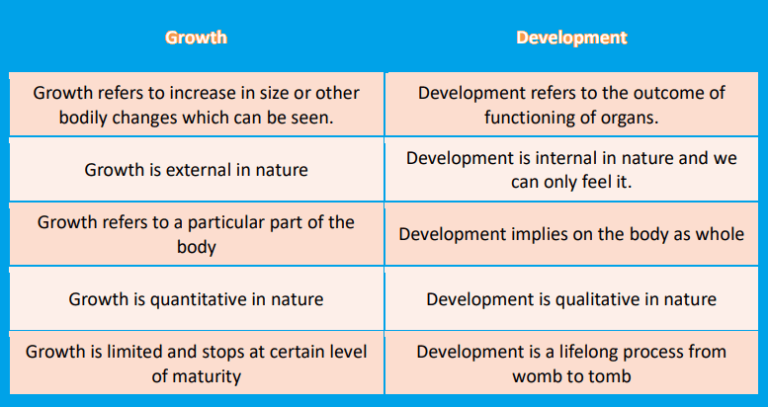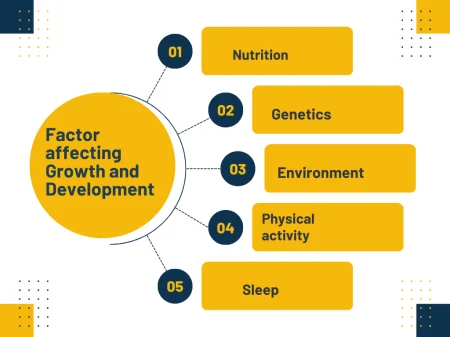The difference between growth and development is fundamental when understanding a child’s overall progress. Growth refers to the physical, measurable changes in a child’s body, height, and weight, including an increase in the size of the organs. It is restricted to the initial years and is often influenced by the genetic makeup and nutrition.
On the other hand, development refers to the progressive enhancement of the child’s emotional, social, cognitive, and behavioral capabilities. It includes learning to speak and think, being able to interact and handling one’s emotions—something that progresses over a lifetime. In other words, growth tells us about a child’s size, whereas development speaks to how well a child is working. Both occur simultaneously and are considered equal in importance during early childhood. Understanding this distinction allows for timely support, and if delays are noted, participation in an Early Intervention Program can greatly impact healthy child growth and development.
What is Growth?
Growth in early childhood refers to physical and biological changes—such as increases in height, weight, and internal organ size. It is quantitative, which means it can be objectively measured and tracked over time.
Characteristics of Growth:
- Measurable: Trackable through medical tools like growth charts.
- Sequential: Follows a specific order (e.g., a baby sits before they stand).
- Time-bound: Most physical growth slows down or stops after adolescence.
- Irreversible: Once a child grows in size, it doesn’t decrease under normal conditions.
Growth is often used as an indicator of a child’s health and nutritional status, making regular monitoring vital during pediatric visits.

What is Development?
Development, on the other hand, refers to functional and behavioral changes in a child. It encompasses how a child thinks, communicates, moves, and interacts with the world around them. Development is qualitative and continuous throughout life.
Types of Development:
- Cognitive Development: Learning, memory, problem-solving.
- Emotional Development: Understanding and managing emotions.
- Social Development: Building relationships, empathy, cooperation.
- Motor Development: Fine motor (writing, drawing) and gross motor skills (running, jumping).
- Language Development: Speaking, understanding, and using language.
Development reflects the mental and emotional maturity of a child and is strongly influenced by their environment and experiences.

Difference Between Growth and Development in Early Childhood
Though these words are used interchangeably very often, growth and development mean two different sides of a child’s achievement. Growth is a measurable, physical change in the child’s body referring to height, weight, and size of the body. Quantitatively, it is usually fast in early years and slows down after adolescence.
Example: A child growing from 90 to 100 cm in height.
Development encompasses emotional, social, and cognitive changes, such as learning to talk, think, or relate to others. It is qualitative and occurs throughout the lifespan.
Example: A child learning to share toys or complete their sentences. Growth and development together demonstrate the changing structure of a child’s body and how they adapt, learn, and connect to the world. Both are equally crucial in terms of a child’s overall development.

Examples of Growth vs Development
Here are more real-life examples to clearly differentiate between growth and development:
- Growth Example: A toddler gains 2 kilograms over a 6-month period.
- Development Example: A toddler learns to name colors and follow simple instructions.
- Growth Example: The length of a baby’s foot increases.
Development Example: The baby starts using gestures to communicate like waving or pointing.
Principles of Growth and Development
Understanding the principles of growth and development helps to recognize how children progress. These principles serve as guidelines for predicting and interpreting a child’s growth patterns and behaviors.
- Development is Continuous and Cumulative: Skills build on one another.
- Proceeds from Head to Toe (Cephalocaudal): Control of the head before the feet.
- Proceeds from Center to Extremities (Proximodistal): Arms before hands and fingers.
- Follows Predictable Patterns: Milestones such as crawling, walking, and speaking occur in a predictable order.
- Individual Rates of Development: No two children develop at exactly the same pace.
Different Areas Are Interrelated: Physical, cognitive, and emotional growth influence one another.
Stages of Growth and Development in Early Childhood
1. Infancy (0–1 year)
- Growth: Rapid increase in height and weight.
- Development: Reflex actions, sensory development, bonding.
2. Toddlerhood (1–3 years)
- Growth: Slower but steady physical growth.
- Development: Speech emerges, walking turns to running, tantrums begin as independence grows.
3. Preschool Age (3–5 years)
- Growth: Physical features become more proportionate.
- Development: Imagination soars, social skills develop, basic academic concepts start forming.
4. Early School Age (5–8 years)
- Growth: Steady height and weight gain.
- Development: Improved reasoning, independence in tasks, group play, emotional regulation.

Factors Affecting Growth and Development
Several factors affect growth and development, either positively or negatively:
1. Genetic Inheritance
- Determines potential for height, intelligence, metabolism, and even temperament.
2. Nutrition
- Proper intake of nutrients is essential for both physical growth and brain development.
- Malnutrition during early childhood can cause long-term cognitive delays.
3. Physical Activity
- Supports bone density, muscle growth, and motor skills development.
4. Health and Illness
- Chronic illnesses, infections, or delayed vaccinations can impair development.
- Regular check-ups can prevent or manage these effectively.
5. Environment
- Safe, clean, and stimulating environments promote curiosity and skill-building.
6. Parenting Style and Emotional Support
- Responsive, loving caregivers boost a child’s confidence, motivation, and emotional intelligence.
7. Education and Early Learning Exposure
- Early childhood education programs lay the foundation for lifelong learning habits.

Benefits of Understanding Growth and Development
- Timely Intervention: Spotting delays early can lead to better outcomes.
- Holistic Care: Addresses the child’s physical, emotional, and cognitive needs.
- Customized Parenting: Each child can be supported based on their pace and needs.
- Better Communication with Professionals: Helps parents understand pediatric advice or developmental assessments.
How Parents and Educators Can Support Growth and Development
- Monitor milestones regularly using developmental checklists.
- Ensure balanced nutrition with essential vitamins and minerals.
- Encourage play and exploration, both indoors and outdoors.
- Build secure emotional bonds through consistent affection and communication.
- Stimulate curiosity with books, stories, and hands-on activities.
- Limit screen time and promote interactive activities.
Final Thoughts
Understanding the concept of growth and development helps create a nurturing environment for every child. While growth gives us measurable indicators of physical progress, development reveals the depth of a child’s emotional, cognitive, and social abilities.
By appreciating the difference between growth and development in early childhood, caregivers can offer better, more informed support that meets the unique needs of each child. At Nurturers, our mission is to guide families and educators in raising well-rounded children by integrating knowledge with care.

